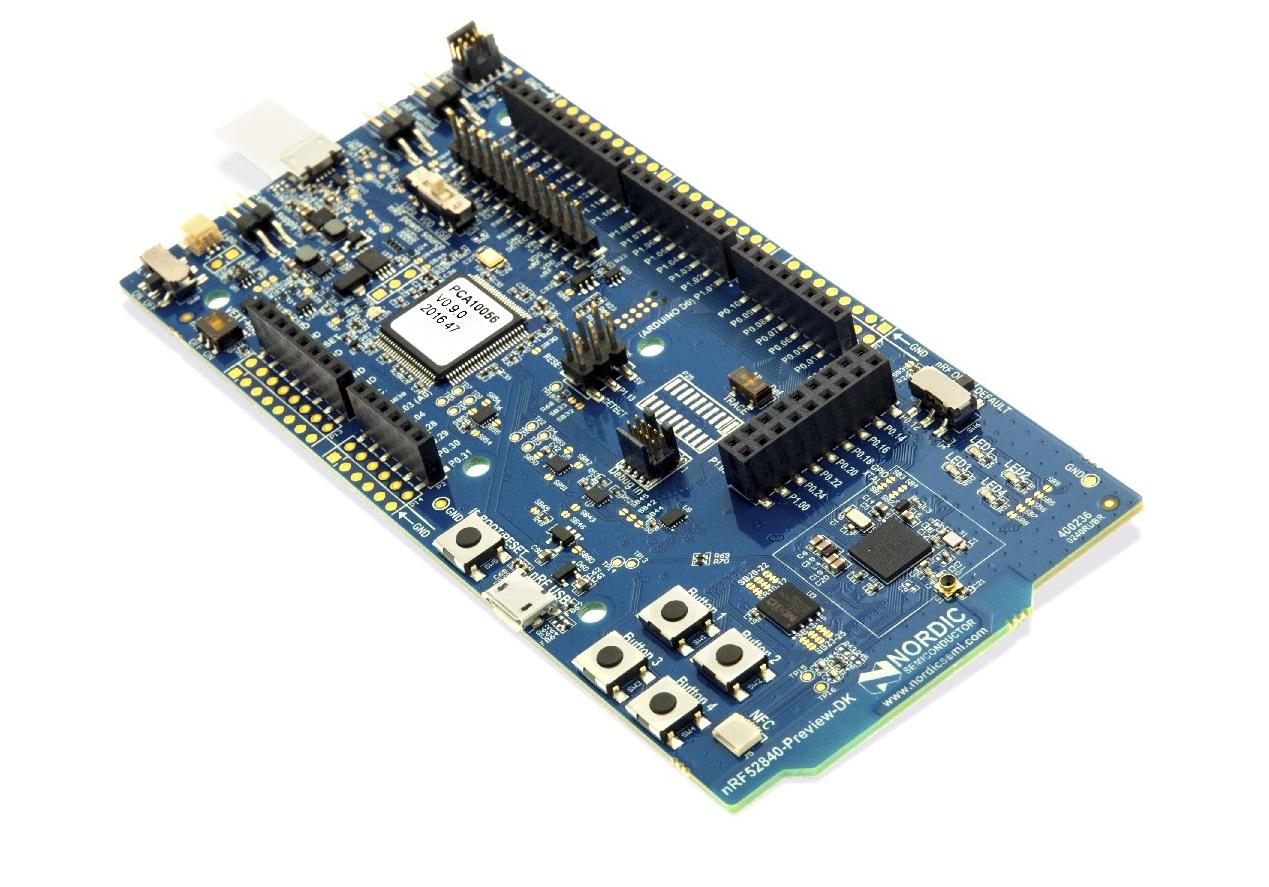nRF52840-PCA10056¶
Overview¶
Zephyr applications use the nrf52840_pca10056 board configuration to run on the nRF52840 Preview Development Kit (PCA10056) hardware. It provides support for the Nordic Semiconductor nRF52840 ARM Cortex-M4F CPU and the following devices:
- NVIC
- RTC
- UART
- GPIO
- FLASH
- RADIO (Bluetooth Low Energy)
- Segger RTT (RTT Console)
More information about the board can be found at the nRF52840 PDK website [1]. The Nordic Semiconductor Infocenter [2] contains the processor’s information and the datasheet.
Hardware¶
nRF52840 PDK has two external oscillators. The frequency of the slow clock is 32.768 kHz. The frequency of the main clock is 32 MHz.
Supported Features¶
The nrf52840_pca10056 board configuration supports the following hardware features:
| Interface | Controller | Driver/Component |
|---|---|---|
| NVIC | on-chip | nested vectored interrupt controller |
| RTC | on-chip | system clock |
| UART | on-chip | serial port |
| GPIO | on-chip | gpio |
| FLASH | on-chip | flash |
| RADIO | on-chip | bluetooth |
| RTT | on-chip | console |
Other hardware features are not supported by the Zephyr kernel. See nRF52840 PDK website [1] and Nordic Semiconductor Infocenter [2] for a complete list of nRF52840 Development Kit board hardware features.
Programming and Debugging¶
Flashing¶
Follow the instructions in the Nordic nRF5x Segger J-Link page to install and configure all the necessary software.
This tutorial uses the sample application
shell $ZEPHYR_BASE/samples/shell, and uses the information that can be found in
Flashing.
To build the Zephyr kernel, enter:
$ cd $ZEPHYR_BASE $ make -C samples/shell BOARD=nrf52840_pca10056
Connect the micro-USB cable to the nRF52840 PDK and to your computer.
Erase the flash memory in the nRF52840:
$ nrfjprog --eraseall -f nrf52Flash the application using the nrfjprog tool:
$ nrfjprog --program outdir/zephyr.hex -f nrf52Run your favorite terminal program to listen for output.
$ minicom -D <tty_device> -b 115200
Replace
<tty_device>with the port where the board nRF52840 PDK can be found. For example, under Linux,/dev/ttyACM0.The
-boption sets baudrate ignoring the value from config.Press the Reset button and you should see the output of shell application in your terminal.
Debugging¶
Refer to the Nordic nRF5x Segger J-Link page to learn about debugging Nordic boards with a Segger IC.
Testing the LEDs and buttons in the nRF52840 PDK¶
There are 2 samples that allow you to test that the buttons (switches) and LEDs on the board are working properly with Zephyr:
samples/basic/blinky
samples/basic/button
You can build and flash the examples to make sure Zephyr is running correctly on
your board. The button and LED definitions can be found in boards/arm/nrf52840_pca10056/board.h.
References¶
| [1] | (1, 2) http://www.nordicsemi.com/eng/Products/nRF52840-Preview-DK |
| [2] | (1, 2) http://infocenter.nordicsemi.com/ |

